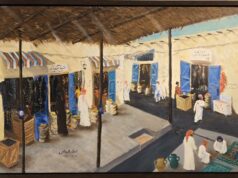Have you ever stepped into a room and instantly felt uplifted? Or entered another that wrapped you in calm? That quiet emotional shift isn’t just about style – it’s the power of color at work.
In interior design, color isn’t just an afterthought – it’s an emotional blueprint. The hues we choose influence how we feel, think, and interact in a space. Whether you’re creating a personal retreat or a dynamic commercial setting, understanding the psychology of color turns design into a truly human experience.
The Emotional Pulse of Color
Colors connect with us on a subconscious level. Warm tones – like terracotta, golden yellow, and coral – infuse energy, making them ideal for kitchens, dining rooms, or collaborative workspaces. Cool shades such as soft blue, sage green, and lavender invite calm and clarity, perfect for bedrooms, bathrooms, and meditation corners.
But it’s not just about categories. Even slight variations in tone can shift a room’s feel. A muted mustard adds quiet confidence, while a sharp lemon yellow may excite and energize. A pale aqua soothes, while a deep teal commands sophistication.
Crafting Mood Through Color
Designing with color isn’t about following trends – it’s about aligning with purpose. Ask yourself: How should this space feel? That simple question can guide every palette choice with clarity.
- For connection: Earthy hues like taupe, soft browns, and clay create grounding energy in shared spaces.
• For focus: Accent walls in deep green, charcoal, or navy offer visual weight and mental clarity in offices or reading zones.
• For rest: Bedrooms benefit from gentle tones – think dusty lavender, warm beige, or seafoam green – for a sense of peace.
• For vitality: Kitchens and entryways come alive with light peach, creamy white, or sunlit yellow – lifting the mood without overwhelming the eye.
Light Makes the Palette Dance
Lighting can shift a color’s personality. What feels cozy in morning light may turn cool under evening bulbs. That’s why sampling paint or observing textiles throughout the day is key – it ensures your design holds its emotional intent from dawn to dusk.
Accent Colors: The Unsung Heroes
Not every wall needs to shout. Often, it’s the subtle pops – a bold cushion, an art piece, or a textured rug – that bring balance and intrigue. In a neutral room, a splash of emerald or burnt orange can bring warmth and focus. In a more vibrant setting, natural elements like wood, stone, or linen bring the eye back to center.
Design That Feels as Good as It Looks
At its core, interior design is more than visual – it’s emotional architecture. When color is chosen with care, a space becomes more than four walls; it becomes a mirror of how we want to feel.
The right shade can encourage better sleep, inspire creative work, or make guests feel instantly at home. Whether you’re designing a cozy retreat, a bustling café, or a peaceful waiting area, color becomes your silent storyteller – shaping experiences without a word.
Final Reflection: More Than Just a Color Choice
Beautiful interiors don’t just happen – they’re felt. They whisper comfort, creativity, or clarity, depending on the story you want to tell.
So, as you pick your next palette, don’t just think about what’s on trend. Think about what you want the room to say. Let the emotion guide the design. Because when color is used with intention, the result isn’t just a beautiful space – it’s a space that feels like home.









